#mamoul
Text
Eid Mubarak
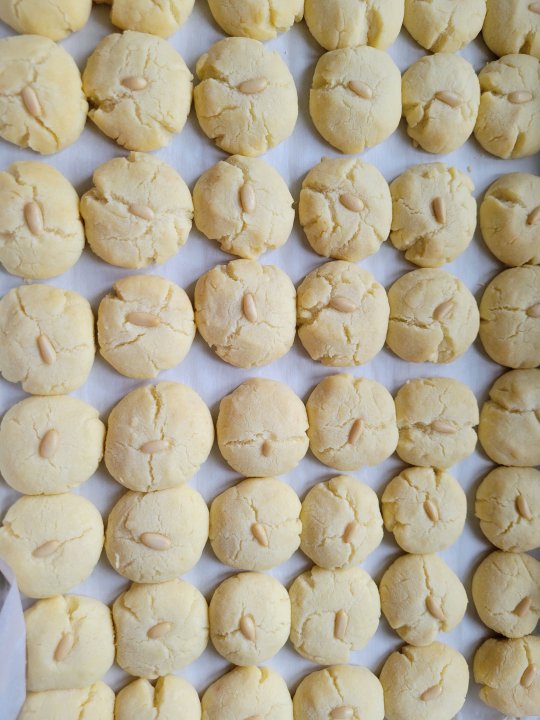
View On WordPress
#butter cookies#desserts#eid greetings#eid Mubarak#family#feasts#friends#gathering#ghraibeh#mamoul#semolina cookies
0 notes
Photo

✿ マアムール | Maamoul
・セモリナ粉で作られた中にフィリングが入っているバタークッキーである。フィリングにはイチジクやデーツなどのドライフルーツや、ナッツ(ピスタチオやクルミ、場合によってはアーモンド)から作られる。
・マアムールはラマダン(断食月)やその後のイード(ラマダン明け祝祭)で食べるアラブの定番スイーツの一つ。”あん”のデイツペーストには、砂糖が入りません。甘いお菓子が多いアラブの中で、甘さ控えめのとてもおいしいお菓子です。
#マアムール#マムール#maamoul#mamoul#ma moul#maa moul#ma’-mul#ma’mul#sweets#sweets:マムール#2020〜#アラブ#sweets:アラブ#セモリナ粉#アラブ:セモリナ粉#デーツ#アラブ:デーツ#バタークッキー#ラマダン
1 note
·
View note
Text


Arab superheroes my beloved
#dc#marvel#simon baz#layla el faouly#moon knight#green lantern#yummy yummy representation#Simon come over to my house#we can make mamoul together#I love you Simon baz I love you Layla el faouly
20 notes
·
View notes
Photo

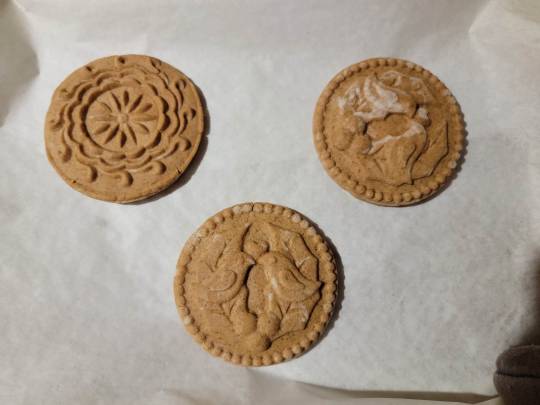

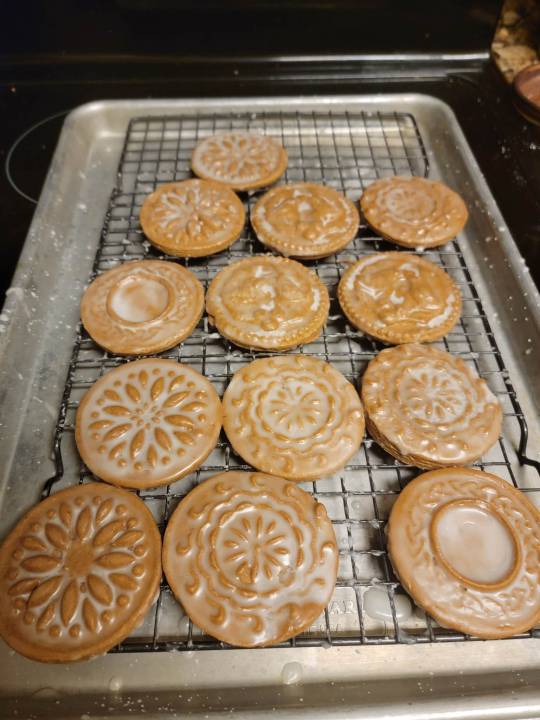
Stamped + glazed gingerbread cookies.
Recipe from here.
#food#baking#christmas#cookies#I added some grains of paradise as well#stamps can be a pain but the results are very satisfying#one is a mamoul mold tho
24 notes
·
View notes
Text

Les voeux, 2023
#artists on tumblr#installation#mixed media#art contemporain#contemporary art#concrete#bread#keys#kaek and mamoul#ex voto#méditerranée
2 notes
·
View notes
Text
Mooncake (mamoul) machine
This Mooncake (mamoul) machine can form different kinds of geometry shapes such as ball shape, bar shape constant bar shape, triangle shape, etc, and it can be adjustable freely for the product weight, and production speed. moreover, food with double fillings can be produced, such as moon cake, crystal fruits, date paste pancake, pineapple cake, mashed bean bun egg-yolk puff, glutinous rice balls meat balls, etc. it is easy to operate and remember performances of hundreds of products. and the machinery is durable and easy to operate since major electrical controlling components are among first-class world-famous brands, it can be assured that it is capable of working for a long time.
TEL:+86-182 2181 9059
Email:[email protected]
Address:No.1528,Hubin Road,Huqiao Town,Fengxian District,Shanghai

0 notes
Text

[ID: Two plates of cookies, one oval and topped with powdered sugar, and the others shaped in rings; one cookie is broken in half to show a date filling; two glasses of coffee on a silver tray are in the background. End ID]
معمول فلسطيني / Ma’moul falastini (Palestinian semolina cookies)
Ma’moul (also transliterated “ma’amoul,” “maamoul” and “mamoul”) are sweet pastries made with semolina flour and stuffed with a date, walnut, or pistachio filling. The cookies are made tender and crumbly with the addition of fat in the form of olive oil, butter, or clarified butter (سمن, “samn”); delicate aromatics are added by some combination of fennel, aniseed, mahlab (محلب: ground cherry pits), mastic gum (مستكه, “mistīka”), and cinnamon.
“مَعْمُول” means “made,” “done,” “worked by hand,” or “excellently made” (it is the passive participle of the verb “عَمِلَ” “‘amila,” "to do, make, perform"). Presumably this is because each cookie is individually filled, sealed, and shaped by hand. Though patterned molds known as طوابع (“ṭawābi’,” “stamps”; singular طابع, “ṭābi’”) are sometimes used, the decorations on the surface of the cookies may also be applied by hand with the aid of a pair of small, specialized tongs (ملقط, “milqaṭ”).
Because of their laborious nature, ma’moul are usually made for feast days: they are served and shared for Eid, Easter, and Purim, a welcome reward after the Ramadan or Lenten fasts. For this reason, ma’moul are sometimes called “كَعْك العيد” (“ka’k al-’īd,” “holiday cakes”). Plates of the cookies, whether homemade or store-bought, are passed out and traded between neighbors in a practice that is part community-maintenance, part continuity of tradition, and part friendly competition. This indispensable symbol of celebration will be prepared by the women of a family even if a holiday falls around the time of a death, disaster, or war: Palestinian food writer Laila El-Haddad explains that "For years, we endured our situation by immersing ourselves in cooking, in our routines and the things we could control."
Other names for these cakes exist as well. Date ma’moul–the most common variety in Palestine–may be called كَعْك بعَجْوَة (“ka'k b'ajwa”), “cakes with date paste.” And one particular Palestinian variety of ma’moul, studded with sesame and nigella seeds and formed into a ring, are known as كَعْك أَسَاوِر (“ka'k 'asāwir”), “bracelet cakes.” The thinner dough leads to a cookie that is crisp and brown on the outside, but gives way to a soft, chewy, sweet filling.

[ID: An extreme close-up on one ka'k al-aswar, broken open to show the date filling; ma'moul and a silver teapot are very out-of-focus in the background. End ID]
History
Various sources claim that ma’moul originated in Egypt, with their ancestor, كحك (kaḥk), appearing in illustrations on Pharaonic-era tombs and temples. The more specific of these claims usually refer to “temples in ancient Thebes and Memphis,” or more particularly to the vizier Rekhmire’s tomb in Thebes, as evidencing the creation of a pastry that is related to modern kahk. One writer attests that this tomb depicts “the servants mix[ing] pure honey with butter on the fire,” then “adding the flour by mixing until obtaining a dough easy to transform into forms” before the shaped cookies were “stuffed with raisins or dried dates and honey.” Another does not mention Rekhmire, but asserts that “18th-dynasty tombs” show “how honey is mixed with butter on fire, after which flour is added, turning the substance into an easily-molded dough. These pieces are then put on slate sheets and put in the oven; others are fried in oil and butter.”
Most of these details seem to be unfounded. Hilary Wilson, summarizing the state of current research on Rekhmire’s tomb, writes that the depicted pastries were delivered as an offering to the Treasury of the Temple of Amun; that they certainly contained ground tiger nuts; that they presumably contained wheat or durum flour, since ground tiger nuts alone would not produce the moldable dough illustrated; that the liquid added to this mixture to form the dough cannot be determined, since the inscription is damaged; that the cakes produced “are clearly triangular and, when cooked are flat enough to be stacked” (any appearance that they are pyramidal or conical being a quirk of ancient Egyptian drawing); that they were shallow-fried, not cooked in an oven; and that honey and dates are depicted at the far left of the scene, but their relationship to the pastries is unclear. There is no evidence of the honey being included in the dough, or the cookies being stuffed with dates; instead, Wilson speculates that “It appears that the cooks are preparing a syrup or puree of dates and honey. It is tempting to think that the cakes or pastries were served [...] with a generous portion of syrup poured over them.” Whether there is any direct lineage between these flat, fried pastries and the stuffed, molded, and baked kahk must also be a matter of speculation. [1]
Another origin claim points to ancient Mesopotamia. James David Audlin speculates that ma’moul are "possibly" the cousins of hamantaschen, both being descended from the molded "kamānu cakes that bore the image of [YHWH’s] goddess wife Inanna [also known as Ishtar or Astarte]" that were made in modern-day Syria. Other claims for Mesopotamia cite qullupu as the inspiration: these cakes are described in the contemporary record as wheat pastries filled with dates or raisins and baked. (Food historian Nawal Nasrallah writes that these cookies, which were offered to Ishtar for the new year festival in spring, may also be an origin point for modern Iraqi كليچة, "kleicha.")
The word "määmoul" had entered the English language as a type of Syrian farina cake by 1896.
In Palestine
From its earliest instantiations, Zionist settlement in Palestine was focused on building farming infrastructure from which Palestinians could be excluded: settlers, incentivized by foreign capital, aimed at creating a separate economy based around farms, agricultural schools, communal settlements, and research institutions that did not employ Arabs (though Arab labor and goods were never entirely cut out in practice).
Zionist agricultural institutes in Palestine had targeted the date as a desirable crop to be self-sufficient in, and a potentially profitable fruit for export, by the 1930s. Ben-Zion Israeli (בנציון ישראלי), Zionist settler and founder of the Kinneret training farm, spoke at a 1939 meeting of the Organization of Fruit Growers (ארגון מגדלי פירות) in the Nahalel (נהלל) agricultural settlement to discuss the future of date palms in the “land of Israel.” He discussed the different climate requirements of Egyptian, Iraqi, and Tunisian cultivars—and which among them seemed “destined” (נועדים) for the Jordan Valley and coastal plains—and laid out his plan to collect saplings from surrounding countries for planting despite their prohibitions against such exports.
In the typical mode of Zionist agriculture discourse, this speech dealt in concepts of cultivation as a means of coming into a predestined ownership over the land; eating food suited for the climate as a means of belonging in the land; and a return to Biblical history as a triumphant reclamation of the land from its supposed neglect and/or over-cultivation by Palestinian Arabs over the past 2,000 years. Israeli opened:
נסתכל לעברה של הארץ, אשר אנו רוצים להחיותה ולחדשה. היא השתבחה ב"שבעה מינים" ואלה עשוה אינטנסיבית וצפופת אוכלוסין. לא רק חיטה ושעורה, כי אם גם עצים הנותנים יבול גדול בעל ערך מזוני רב. בין העצים -- הזית [...] הגפן, התאנה והתמר. לשלושה מהם, לזית, לתאנה ולתמר חטאה התישבותנו שאין היא נאחזת בהם אחיזה ציםכר של ממש ואינה מפתחת אותם דים.
We will look to the past of the land [of Israel], which we want to revive and renew. It excelled in "seven species," and these flourished and became densely populated. Not only wheat and barley, but also trees that give a large and nutritious crop. Among the trees: the olive, [...] the vine, the fig and the date. For three of them, the olive, the fig and the date, it is the sin of our settlement that it does not hold on to them with a strong grip and does not develop them.
He continued to discuss the benefits of adopting the date—not then part of the diet of Jewish settlers—to “health and economy” (בריאות וכלכלה). Not only should the “land of Israel” become self-sufficient (no longer importing dates from Egypt and Iraq), but dates should be grown for export to Europe.
A beginning had already been made in the importation of about 8,000 date palm saplings over the past two decades, of which ¾ (according to Israeli) had been brought by Kibbutz Kinneret, and the remaining ¼ by the settlement department of the Zionist Commission for Palestine (ועד הצירים), by the Mandate government's agriculture department, and by people from Degania Bet kibbutz ('דגניה ב). The majority of these imports did not survive. More recently, 1000 smuggled saplings had been planted in Rachel’s Park (גן רחל), in a nearby government plot, and in various places in the Jordan Valley. Farms and agricultural institutions would need to collaborate in finding farmers to plant dates more widely in the Beit-Sha’an Valley (בקעת בית שאן), and work to make dates take their proper place in the settlements’ economies.
These initial cuttings and their descendents survive in large plantations across “Israel” and the occupied Palestinian territories. Taher Herzallah and Tarek Khaill write that “Palm groves were planted from the Red Sea in the south along the Dead Sea, and as far as the Sea of Galilee up north, which has given the Israeli date industry its nickname ‘the industry of the three seas’” Since Israel occupied the Palestinian West Bank in 1967, it has also established date plantations in its illegal settlements in that portion of the Jordan Valley.” Today, these settlements produce between 40 and 60% of all Israeli dates.
In 2022, Israel exported 67,042 tons of dates worth $330.1 million USD; these numbers have been on a steady rise from 4,909 tons worth $1.2m. in 1993. Palestinian farmers and their children, disappropriated from their land and desperate for income, are brought in to date plantations to work for long hours in hazardous conditions for low pay. Workers are lifted into the date palms by cranes where they work, with no means of descending, until the crane comes to lower them down again at the end of the day. Injuries from falls, pesticides, heat stroke, and date-sorting machinery are common.
Meanwhile, settlers work to curtail and control Palestinian production of dates. The Palestinian population in the West Bank and Gaza is used as a pool of cheap labor and a captive market to purchase Israeli imports, absorb excesses in Israeli goods, stabilize Israeli wages, and make up for market deficits. Thus Palestinian date farmers may be targeted with repressive measures such as water contamination and diversion, destruction of wells, crop destruction, land theft, military orders forbidding the planting of trees, settler attacks, closing of checkpoints and forbidding of exports, and the denial of necessary equipment or the means to make it, in part to ensure that their goods do not compete with those of Israeli farmers in domestic or foreign markets. Leah Temper writes that these repressive measures are part of a pattern whereby Israel tries to “stop [Palestinian] growth in high value crops such as strawberries, avocados and dates, which are considered to be ‘Israeli Specialties’.”
At other times, Palestinian farmers may be ordered to grow certain crops (such as strawberries and dates), and forbidden to grow anything else, when Israeli officials fear falling short of market demand for a certain good. These crops will be exported by Israeli firms, ensuring that the majority of profits do not accrue to Palestinians, and that Palestinians will not have the ability to negotiate or fulfill export contracts themselves. Nevertheless, Palestinian farmers continue to defy these oppressive conditions and produce dates for local consumption and for export. Zuhair al-Manasreh founded date company Nakheel Palestine in 2011, which continues production despite being surrounded by Israeli settlements.
Boycotts of Israeli dates have arisen in response to the conditions imposed on Palestinian farmers and workers. Herzallah and Khaill cite USDA data on the effectiveness of boycott, pressure, and flyering campaigns initiated by groups including American Muslims for Palestine:
Israel’s exports of dates to the US have dropped significantly since 2015. Whereas 10.7 million kilogrammes (23.6 million pounds) of Israeli dates entered the US market in 2015-2016, only 3.1 million kilogrammes (seven million pounds) entered the US market in 2017-2018. The boycott is working and it is having a detrimental effect on the Israeli date industry.
Date products may not be BDS-compliant even if they are not labeled as a product of Israel. Stores may repackage dates under their own label, and exporters may avoid declaring their dates to be a product of Israel, or even falsely label them as a product of Palestine, to avoid boycotts. Purchase California dates, or dates from a known Palestinian exporter such as Zaytoun or Yaffa (not “Jaffa”) dates.
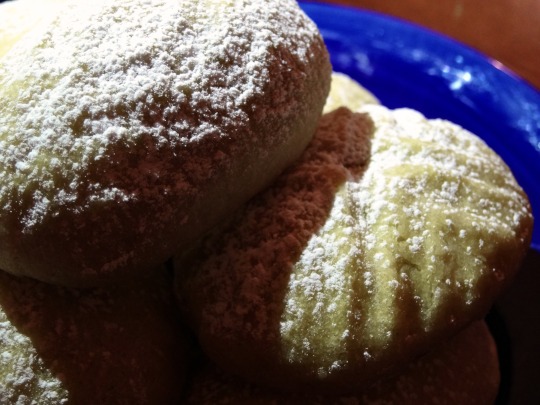
[ID: Close-up of the top of ma'moul, decorated with geometric patterns and covered in powdered sugar, in strong light and shadow. End ID]
Elsewhere
Other efforts to foreground the provenance and political-economic context of dates in a culinary setting have been made by Iraqi Jew Michael Rakowitz, whose store sold ma’moul and date syrup and informed patrons about individual people behind the hazardous transport of date imports from Iraq. Rakowitz says that his project “utilizes food as a point of entry and creates a different platform by which people can enter into conversation.”
[1] Plates from the tomb can be seen in N. de G. Davies, The tomb of Rekh-mi-Rē at Thebes, Vol. II, plates XLVII ff.
Purchase Palestinian dates
Donate to evacuate families from Gaza
Flyer campaign for eSims
Ingredients:
Makes 16 large ma'moul and 32 ka'k al-aswar; or 32 ma'moul; or 64 ka'k al-aswar.
For the dough:
360g (2 1/4 cup) fine semolina flour (سميد ناعم / طحين فرخة)
140g (1 cup + 2 Tbsp) white flour (طحين ابيض)
200g (14 Tbsp) margarine or vegetarian ghee (سمن), or olive oil
2 Tbsp (15g) powdered sugar
1 1/2 Tbsp (10g) dugga ka'k (دقة كعك)
1/2 tsp (2g) instant yeast
About 2/3 cup (190mL) water, divided (use milk if you prefer)
1 tsp toasted sesame seeds (سمسم)
1 tsp toasted nigella seeds (قزحه / حبة البركة)
Using olive oil and water for the fat and liquid in the dough is more of a rural approach to this recipe; ghee and milk (or milk powder) make for a richer cookie.
To make the bracelets easy to shape, I call for the inclusion of 1 part white flour for every 2 parts semolina (by volume). If you are only making molded cookies and like the texture of semolina flour, you can use all semolina flour; or vary the ratio as you like. Semolina flour will require more added liquid than white flour does.
For the filling:
500g pitted Madjoul dates (تمر المجهول), preferably Palestinian; or date paste
2 Tbsp oil or softened margarine
3/4 tsp dugga ka'k (دقة كعك)
3/4 tsp ground cinnamon
5 green cardamom pods, toasted, skins removed and ground; or 1/4 tsp ground cardamom
Small chunk nutmeg, toasted and ground, or 1/4 tsp ground nutmeg
10 whole cloves, toasted and ground, or 1/4 tsp ground cloves
The filling may be spiced any way you wish. Some recipes call for solely dugga ka'k (or fennel and aniseed, its main components); some for a mixture of cinnamon, cardamom, nutmeg, and/or cloves; and some for both. This recipe gives an even balance between the pungency of fennel and aniseed and the sweet spiciness of cinnamon and cloves.
Palestinian date brands include Ziyad, Zaytoun, Hasan, and Jawadir. Palestinian dates can also be purchased from Equal Exchange. You can find them online or at a local halal market. Note that an origin listed as "West Bank" does not indicate that a date company is not Israeli, as it may be based in a settlement. Avoid King Solomon, Jordan River, Mehadrin, MTex, Edom, Carmel Agrexco, Arava, and anything marked “exported by Hadiklaim”. Also avoid supermarket brands, as the origin of the dates may not be clearly marked or may be falsified to avoid boycots.
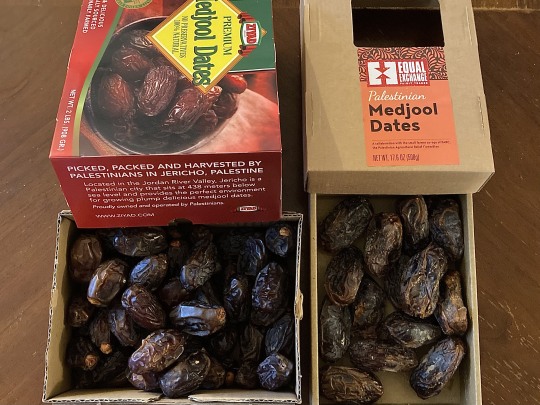
Instructions:
For the dough:
1. Melt margarine in a microwave or saucepan. Measure flours into a large mixing bowl and pour in margarine; mix thoroughly to combine. Rub flours between your hands for a few minutes to coat the grains in margarine. The texture should resemble that of coarse sad. Refrigerate the mixture overnight, or for up to 3 days.

2. Add dry ingredients to dough. If making both molded ma'moul and ka'k al-aswar, split the dough in half and add sesame and nigella seeds to one bowl.
3. Add water to each dough until you get a smooth dough that does not crack apart when formed into a ball and pressed. Press until combined and smooth, but do not over-knead—we don't want a bready texture. Set aside to rest while you make the filling.

For the filling:
1. Pit dates and check the interiors for mold. Grind all ingredients to a paste in a food processor. You may need to add a teaspoon of water, depending on the consistency of your dates.
To shape the cookies:
Divide the filling in half. One half will be used for the ma'moul, and the other half for the bracelets.
For the ma'moul:
1. With wet hands, pinch off date filling into small chunks about the size of a walnut (13-16g each, depending on the size of your mold)—or roll filling into a long log and divide into 16-20 even pieces with a dough scraper. Roll each piece of filling into a ball between your palms.
2. Divide the dough (the half without seeds) into the same number of balls as you have balls of filling, either using a kitchen scale or rolling into a log and cutting.
3. Form the dough into a cup shape. Place a ball of filling in the center, and fold the edges over to seal. Press the dough into a floured ma'moul mold to shape, then firmly tap the tip of the mold on your work surface to release; or, use a pair of spiked tweezers or a fork to add decorative designs by hand.

4. Repeat until all the the dough and filling has been used, covering the dough you're not working with to keep it from drying out. Place each cookie on a prepared baking sheet.
For the ka'k al-aswar:
1. With wet hands, divide the date filling into about 32 pieces (of about 8g each); they should each roll into a small log about the size of your pinkie finger.
2. Divide the dough (the half with the seeds) into as many pieces as you have date logs.
3. Take a ball of dough and flatten it into a thin rectangle a tiny bit longer than your date log, and about 3 times as wide. Place the date log in the center, then pull the top and bottom edges over the log and press to seal. Seal the ends.
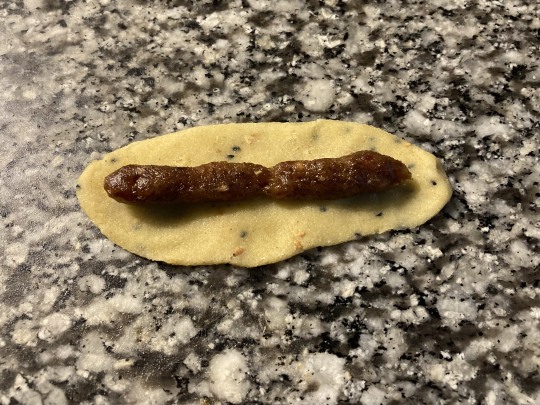
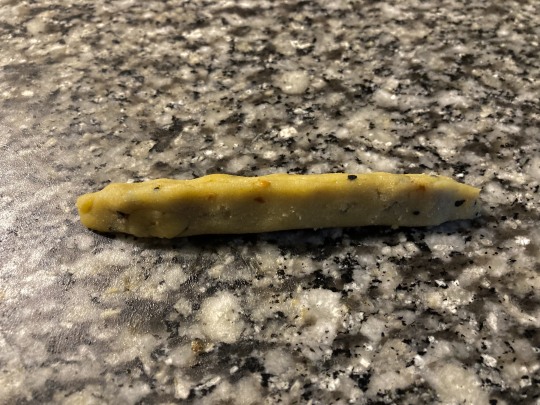
4. Roll the dough log out again to produce a thin, long rope a little bit thinner at the very ends than at the center. Press one side of the rope over the other to form a circle and press to seal.

5. Repeat until all the the dough and filling has been used, covering the dough you're not working with to keep it from drying out. Place each cookie on a prepared baking sheet.
To bake:
1. Bake ma'moul at 350 °F (175 °C) in the center of the oven for about 20 minutes, until very lightly golden brown. They will continue to firm up as they cool.
2. Increase oven heat to 400 °F (205 °C) and bake ka'k al-aswar in the top third of the oven for about 20 minutes, until golden brown.
Sprinkle cookies with powdered sugar, if desired. Store in an airtight container and serve with tea or coffee, or give to friends and neighbors.
325 notes
·
View notes
Text
Sara Abou Rashed, "From The Sky: After Lorca."
"When I die,
bury me in the sky -
no one is fighting over it.
Children are playing soccer
with empty bomb shells
(from the sky I can see them).
A grandmother is baking
her Eid makroota and mamoul
(from the sky I can taste them).
Teens are writing love letters
under an orange tree
(from the sky I can read them).
Soldiers are cocking new rifles
at the checkpoint
(from the sky I can hear them).
Under fire, death and water
are brewing in the kitchen
(from the sky I can smell them!).
When I die, bury me in the sky,
I said, for now, it is quiet -
no one owns it and no one is claiming to."
217 notes
·
View notes
Text
I’ve been told by various importers that any Mamoul cookie coming from Saudi Arabia or Damascus actually contains Iraqi dates, even though the label says “Select Saudi dates.” The baking dates used in these cookies come from Iraq—they’re of better quality and they’re also cheaper. Between 2002 and 2004 there was a company in Sharjah, United Arab Emirates, that was bringing in dates from Basra, from a really famous company called the Al Moosawi Date Company. They were packaging them as Dubai Dates and selling them to the rest of the world as a product of the UAE.
That company stopped business in 2004 because there was a concern, actually a belief throughout the entire region, that the US and Britain had used depleted uranium in the bombs they dropped. From 30 million date palms in the mid-1970s the number fell to sixteen million, and by the end of the 2003 campaign Operation Iraqi Freedom, there were only three million date palms left in the entire country. And these palms were suffering from a kind of Fusarium bacterium, which many scientists link to the use of depleted uranium. The radiation lowers the tree’s immune system. The bacteria attack the trunk, making the trunks go flaccid and the crowns fall over. They end up looking like weeping people. It’s very sad, an ecological disaster that mirrors the human disaster.
Another thing I found out is that whenever anything is labeled from these other countries, Iraqi businessmen take an enormous hit. They see only 30 percent of their profit when these middlemen are involved. I talked about this with a representative from Dubai Dates. It was something he would never bring up with an Iraqi, because the relationship was so adverse. The Iraqis aren’t making any money, but it’s the only way they can get their dates out into the world.
I was also told that even a professional US importer would have problems bringing in Iraqi products. They’d have to wait months. I realized I might have to wait years. I called Charlie Sahadi and asked, “Do you remember me?” I said, “Listen, I found out we can import dates. I am talking to a company in Iraq that thinks we can do it—will you work with me?” He was saying things like, “Look, if this goes wrong, it’s like a black mark on our record, a blemish. The dates could be scanned, and you’ll end up paying $3,500.00 even before they get to our warehouse, and then the USDA [us Department of Agriculture] and the FDA [Food and Drug Administration] have to come and inspect them, and then they might get sent back.” So I tell Charlie I understand, but that I have a budget, and it’s cultural money. He said, “You know this is bad business.” And I said, Yeah, but it might be really good art. And he understood. He understood that if this works out, a big step could be made.
Michael Rakowitz in "Enemy Kitchen: An Interview with Michael Rakowitz," by Liza Johnson. Gastronomica, Vol. 7, No. 3 (Summer 2007), pp. 11-18. DOI 10.1525/gfc.2007.7.3.11.
99 notes
·
View notes
Text
Eid Mubarak
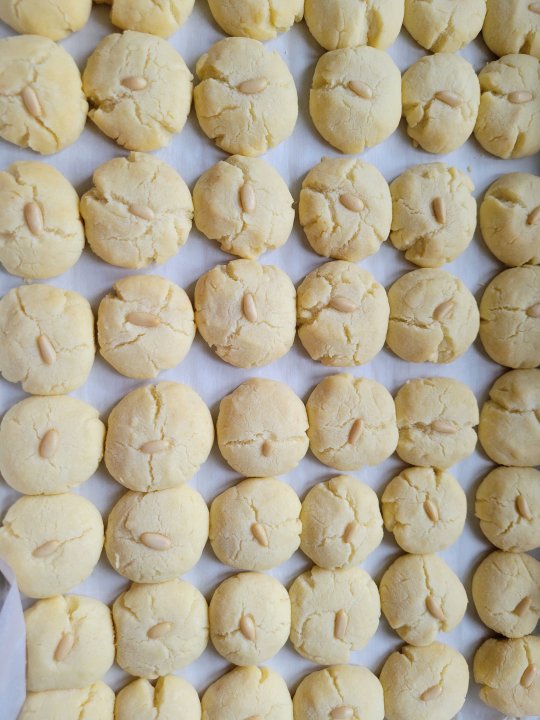
View On WordPress
#butter cookies#desserts#eid greetings#eid Mubarak#family#feasts#friends#gathering#ghraibeh#mamoul#semolina cookies
0 notes
Text
tolkienesque + communes in france + theological demons and angels + english words + animals
Aards Abbinge Abidings Abing Abund Accenta Acces Adher Admiri Afterary Agonflassek Agretch Ahtaro Aikaliant Aikea Ajaccoop Alannin Alative Alfárea Alfíri Allump Alqetter Althurt Alómi Amatéma Ambaultante Amdusion Amdustle Amiah Ampane Ampirya Anakeen Anakoff Anning Anqalme Appeaf Arthworna Asannine Aslengwe Assed Astingelisk Atton Avanima Avaray Awaken Bagne Ballone Barra Beauve Bedring Begion Berew Betweek Beyon Bloomy Boather Bobcatingle Bodien Bodingwe Bolass Bonust Bourneuron Bration Bresitick Brounta Bruarda Bègled Cagny Canna Cantuatin Capace Cation Cerbour Chasias Chele Chris Chrow Châlong Châteat Châtent Châtil Cline Closurge Colled Colognith Colous Combresson Comme Compres Comprey Compula Conflyingle Conthem Contible Cornay Corsa Courge Coverneus Crabezeth Craffencept Craftsmand Crocorsonal Croisolut Croita D'ology Danna Declicket Declivry Delle Demien Deparma Departifice Deter Dungahornon Dwelle Earwe Earyondeles Elligening Ellow Elversong Embershion Empet Emurmure Enfolle Engwetah Entain Erkass Erreux Existare Explac Extenta Faikasse Fairef Faras Farew Farmand Farmatort Fernon Filinklindo Findo Flavac Flavrosalo Fless Focall Folic Footpriel Forested Forma Forme Fourn Fowlark Fromie Fréjust Gainand Gentions Getta Glasta Goodpect Goost Goriency Gourallámin Grassoni Greek Greelzebub Grency Grigoroundu Guantle Guarret Guitemes Gullierríve Handanjou Hanufact Haution Heasuragent Hewello Hildo Himpant Hingsfoil Hispeed Holet Horment Hornon Hurta Hwangeru Hyangwe Hyannow Hyólam Hénie Hérous Hísimast Illumentale Impetition Impressieu Imputte Indingo Inqitannal Insec Inspers Instank Jaccides Jehoe Joseldar Kaimont Kainit Kalmiel Kalphom Karaigualin Karda Karna Kassière Kestemais Kinde Kingda Knolong Koritindo Kuilled Kuship Kúmah Kúvule L'islave Lamed Lancy Landult Lankalma Lastorn Lauko Laukobas Lavre Lemmine Lemna Lengwete Liagener Libouross Lihlik Lilithorn Lilitter Lintya Liévine Lovelya Lovern Lowers Lumahaima Lyonde Lyondo Lúmead Lúmiel Magpieux Makasura Malduma Mamoul Maringweter Maste Mating Mativalla Miginantell Mille Mistanko Mittle Miuya Moisthmus Mombly Montoi Montpanda Morneath Moulder Moutlanda Musiasm Míresta Nahalve Nandes Nangwe Nantelless Nastar Nauka Nelka Neltilde Nemya Nicalves Nighti Nilder Nistory Norder Normeite Norther Nortickle Nóloathym Oathangwe Occite Olarge Olickadell Onosse Ontpelke Ontras Osses Oyota Palargent Pandy Passessive Penninqe Perault Perro Petillo Plana Plarges Plarm Pletta Plumsy Plury Polar Poldfish Poliday Poplea Potala Praye Pricalor Prior Profeste Prosse Psaral Pulomin Qante Rabita Radiante Ramma Rande Ratient Raulta Ravanwa Refusional Remenya Remivorosal Repear Retur Rincept Roissed Romiel Rosany Rouge Rounderi Ruite Ríman Sablessinet Sabnocerte Sampa Sanna Sarchimya Sarinolas Saturya Sealike Sealta Seath Securien Selativet Selforta Sence Serminiasm Sermon Seround Shaddent Singis Snesse Soise Sorge Sorges Sorna Specite Speltil Spiderneux Staina Stonnes Stopic Subjectory Sungand Sunriss Surage Sweal Swombing Sworly Sworme Tasta Tatalle Tatanka Telet Tharya Therea Thight Thion Thron Tingbeetle Tiring Tomoday Tomorror Torya Toróme Touge Trading Trima Tuesdays Tupso Tured Tyambe Tyelko Tyell Tálime Uluse Undes Unive Untress Untyul Unutside Uprichy Urule Vainarboney Valarge Vannion Vannoisy Vassed Veile Vennes Villativer Villen Villie Virtured Viruster Waken Wande Warday Waries Washma Weetang Whirl Whithars Whitheory Wilótimat Wizatikse Womancienne Worme Wrignan Xaphiel Yelimartya Yelles Íriedomink Ómainen Úvima
#names#name stash#random name#fantasy name#fantasy naming#fantasy names#character name#writing names#name#dnd name#dnd names#names stash#worldbuilder#fantasy world#fantasy worldbuilding#worldbuilding ideas#worldbuilding tips#world creation#worldbuilding#fantasy#dnd#markov gen#markovgen#cryptolang#markov chains#444 names
4 notes
·
View notes
Text
the house is stocked on nothing but chocolate, sugary treats, and mamoul. HAPPY EIIIIIIIID:3
0 notes
Text
When I die,
bury me in the sky—
no one is fighting over it.
Children are playing soccer
with empty bomb shells
(from the sky I can see them).
A grandmother is baking
her Eid makroota and mamoul
(from the sky I can taste them).
Teens are writing love letters
under an orange tree
(from the sky I can read them).
Soldiers are cocking new rifles
at the checkpoint
(from the sky I can hear them).
Under fire, death and water
are brewing in the kitchen
(from the sky I can smell them!).
When I die, bury me in the sky,
I said, for now, it is quiet—
no one owns it and no one is claiming to.
💌 SARA ABOU RASHED, From the Sky
1 note
·
View note
Text
86/365
youtube
receta para mamoul, un postre palestino
0 notes
Text
Mamoul Mooncake Machine
Established in 1985, Shanghai Kuihong Machinery Manufacturing Co., Ltd is a professional Mamoul Mooncake Machine Suppliers, specializing in wholesale Mamoul Mooncake Machine, and has many years of production and sales experience. The Mamoul Mooncake Machine and other fully automatic complete sets of equipment produced by our company are the ideal choice with advanced technology, high quality, centralized functions and simple operation. As a Mamoul Mooncake Machine Company, we will always pay attention to the needs of customers to ensure that our equipment is safe, Hygiene and energy saving, our products have passed ISO9001:2008 quality management system certification. After years of unremitting efforts, Shanghai Kuihong Machinery Manufacturing Co., Ltd. has become a well-known equipment manufacturer in China's food industry. We sincerely hope that Kuihong's equipment can help you produce delicious food and bring considerable benefits to your business.
Phone:+86-18221819059
Email:[email protected]
Address:No.1528,Hubin Road,Huqiao Town,Fengxian District,Shanghai

0 notes
